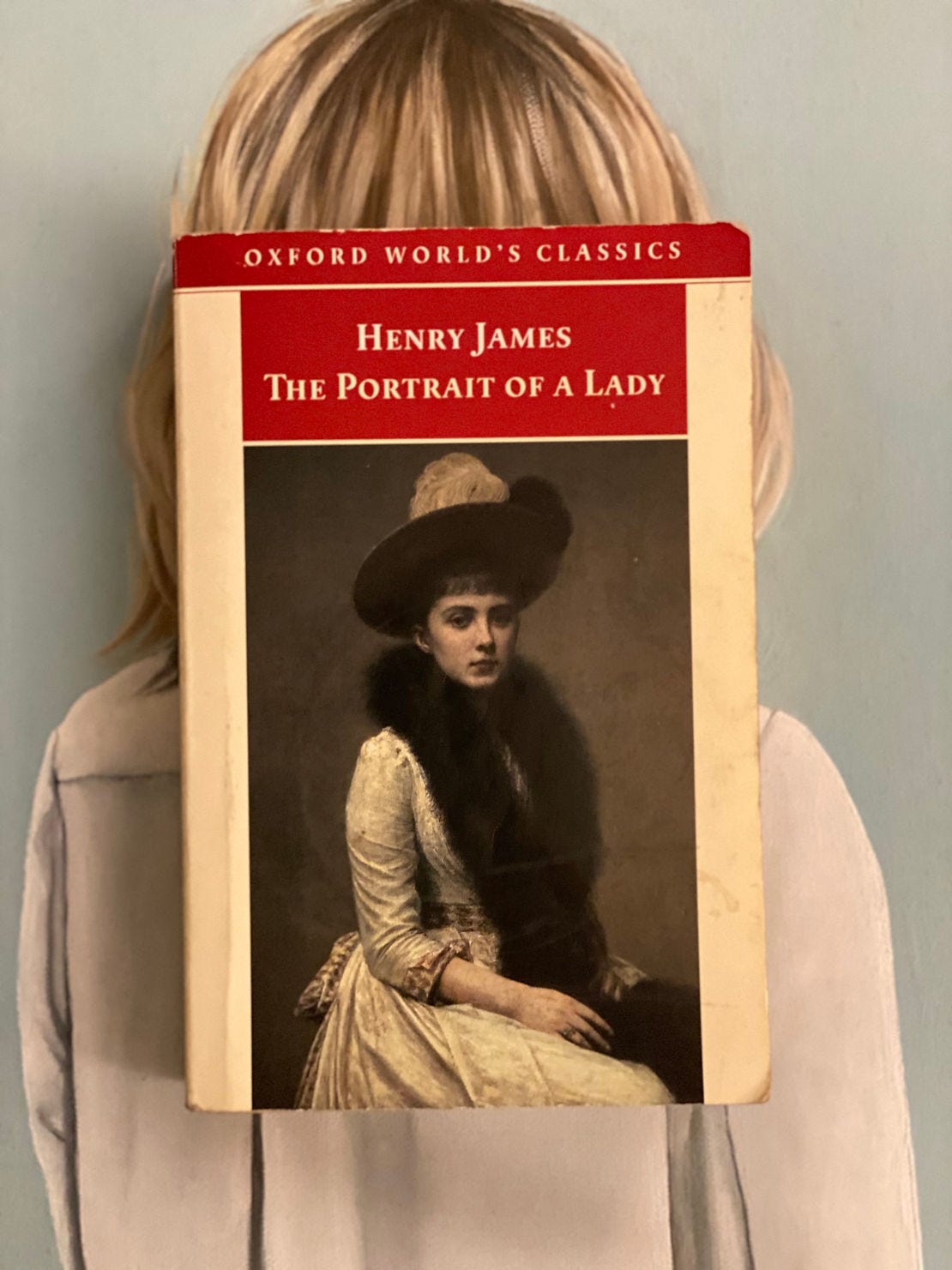Why Read: THE PORTRAIT OF A LADY ... 140 years old ... nothing happens ... everything happens.
I was asked by a friend to lead a book discussion and to pick a book I had taught before and really liked. She had arranged a ‘Gatsby’ zoom a couple months earlier and was looking for something similar but with a smaller more intimate crowd. Without even thinking, I answered The Portrait of a Lady by Henry James. I then came to my senses and warned my friend that it was long and dense. It requires a clear head and time. There are pages and pages of pure print, not an indentation or quotation mark in sight. Many sentences need to be reread to understand. This is James at his best and his most accessible; however, even in this user-friendly novel, he is not for the feint of heart. There is a reason that this great novel – one that is on most every “list” – has not been made into a television series. Very little happens and what does happen requires whole chapters of exposition. Despite all of this, the three times I taught it to a handful of second semester students in an independent study, they loved it. It remains, over 140 years later, a deeply moving and very relevant novel filled with timeless themes, finely etched Durer like scenes, a great unsettling ending and one of the most engaging and paradigmatic of heroines. This is a novel with a 19th century body, a 20th century mind and a 21st century nervous system.
I loved reading this book word for word for the third time. I first read it in Bermuda my sophomore year during a wet, cool and windy week in Bermuda on a Hasty Pudding tour where the book served as an escape from the mania of college students on “spring break”. I remember that I was infatuated with Isabel Archer and that too much of it was read on a front porch with a loud screen door that slammed each time a student came or went. Maybe ten years later, in my banking years, regretting my cavalier approach to my college education, I read it very deliberately and realized for the first time what a masterpiece it is. It has grown with each reading since. This most recent read, maybe my most deliberate, left me with the following thoughts:
This is a book about America, about being American, written by an American who chose not to live in America. Though most every page is set in either England or Europe, every major character with one exception is American. Though very much a book of its time, a book about as diverse and inclusive as first class on the Titanic, this long not terribly accessible prose rings with truth about a country on the precipice of an empire. She, America, is embedded in the idealism, naiveté, smugness and directness of Portrait’s characters and the arc of their lives. And though the Grand Tour of Europe has gone the way of cross Atlantic steamers, the dreamy, obnoxious, irrepressible American has not.
To have read with care the novel’s 223,000 words is to have returned each day to Seurat’s A Sunday Afternoon on the Island of La Grand Jatte at the Art Institute of Chicago. It is pointillism employing the vast vocabulary of the English language. Thus the need for the clear mind, the early morning read, the time and space to allow the canvas to be filled in.
As alluded to earlier, it is an anxious novel. This contributes to its relevance. Identities are ambiguous while motives are blurred and even contradictory. The narration is omniscient but so thorough that it brings into question its very omniscience. All of this combined with a problematic “America” and an unforgettable female protagonist makes Portrait more than sea worthy 140 years after its publication.
This is a feminist novel, well ahead of its time written by a man – a closeted gay man. This may trigger cultural appropriation in our absurdly intolerant culture. If so, it is your loss.
The beginning at Gardencourt and the ending at Gardencourt are both sublime. It is an Edenic novel in many respects.
All of this adds up to a arrestingly cinematic novel considering it is a wall of words with next to no “action”. There is no sex to speak of. The violence is psychological, subtle and terrible with not a speck of blood. It lacks the two foundations of modern entertainment: adultery and murder. Nonetheless, I am desperate for a Masterpiece Theater version. There is real art in this book that maybe an Ang Lee can bring to our small screens. Maybe not … maybe that is why James never got rich from his writings though they were mostly very well received. Maybe the blood is a bit too blue in every respect. Maybe …


